
Elmer Henry Salzman was a highly decorated officer in the United States Marine Corps with the rank of brigadier general. He is most noted for his work as chief of staff, 2nd Marine Aircraft Wing under Lieutenant General Francis P. Mulcahy and later as chief of staff, Marine Air, West Coast under same commander. Salzman won Navy Cross, the United States military's second-highest decoration awarded for valor in combat, while in Nicaragua with 2nd Marine Brigade.

Rathvon McClure Tompkins was a highly decorated United States Marine Corps major general. He saw combat in World War II, the Korean War, the Vietnam War and led Marine units during the Dominican Civil War. Tompkins is well known for his part as commander of the 3rd Marine Division during the Battle of Khe Sanh in Vietnam.
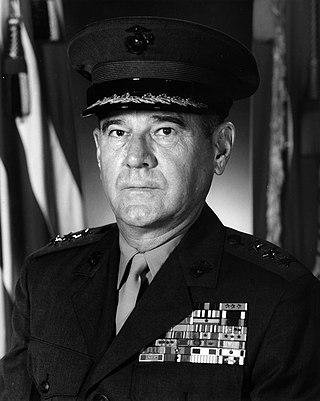
Leo John Dulacki was a highly decorated lieutenant general in the United States Marine Corps. During his 32 years of active service Dulacki held several important intelligence assignments including service in Moscow and Helsinki. He finished his career as director of personnel/deputy chief of staff for manpower at Headquarters Marine Corps.
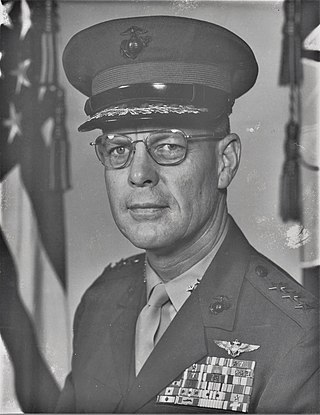
William James White was a decorated lieutenant general in the United States Marine Corps. He was awarded the Silver Star, the United States military's third-highest personal decoration for valor in combat, for his actions in the Korean War. He later served as deputy chief of staff for aviation at Headquarters Marine Corps.

William Stanley Fellers was a decorated officer of the United States Marine Corps with the rank of major general. He is most noted as Director of the Staff of the Inter-American Defense Board or as Supply officer of the 1st Marine Division during World War II.

Major General Harry Kleinbeck Pickett was a United States Marine Corps Officer who has the distinction of having been present at the start of both world wars; he was serving as Commanding Officer of the Marine barracks at Pearl Harbor on December 7, 1941 and is most noted for leading the unit that trained both Marine and Army amphibious units in the Pacific Theater during World War II.

Albert Dustin Cooley was a highly decorated Naval aviator of the United States Marine Corps, who reached the rank of lieutenant general. For his actions during the Battle of Guadalcanal, he received the Navy Cross, the United States military's second-highest decoration awarded for valor in combat. Cooley completed his 33-year Marine Corps career as commanding general of the 1st Marine Aircraft Wing.

Henry Dallas Linscott was a decorated officer of the United States Marine Corps with the rank of lieutenant general. He is most noted for his service on the staff of Amphibious Force Commander, Admiral Richmond K. Turner during World War II and later as the commanding general of the Department of the Pacific and Camp Lejeune.

Edward Hanna Forney was a highly decorated officer of the United States Marine Corps with the rank of brigadier general. He is most noted for his part during the Hungnam evacuation during the Korean War, the largest U.S. amphibious evacuation of civilians, under combat conditions, in American history.
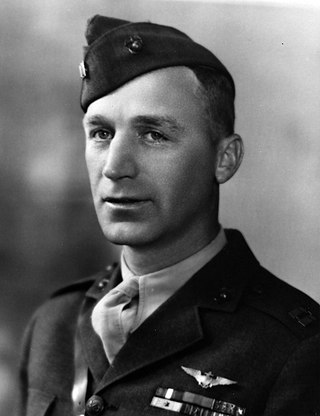
Vernon Melvin Guymon was a highly decorated mustang officer and naval aviator of the United States Marine Corps with the rank of brigadier general. A veteran of many conflicts, Guymon served as gunnery sergeant with 6th Marines during World War I, later commissioned and trained as naval aviator he distinguished himself during the combats in Nicaragua and received Navy Cross, the United States military's second-highest decoration awarded for valor in combat. During World War II, he served as commanding officer of Marine Glider Group 71 and Marine Aircraft Group 12 in the Pacific theater and retired as brigadier general in 1949.

Ira Laffayete Kimes was a highly decorated naval aviator of the United States Marine Corps with the rank of brigadier general. He is most noted for his service as commanding officer of Marine Aircraft Group 22 during the Battle of Midway, for which he received the Navy Distinguished Service Medal.
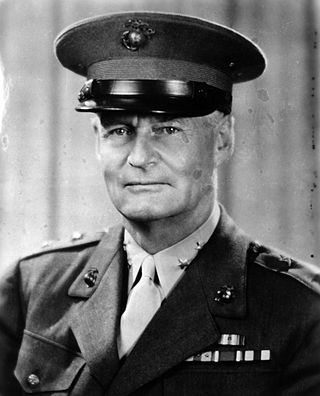
Philip Huston Torrey was an officer of the United States Marine Corps with the rank of major general, who is most noted for his service as commanding general of Marine Corps Base Quantico during World War II. He was responsible for the training of officers at Quantico who subsequently sailed to the Pacific theater.

Archie Franklin Howard was a decorated officer of the United States Marine Corps with the rank of major general who is most noted as commanding general, 6th Marine Division during the Chinese Civil War. He also served as Island Commander at Guadalcanal and later at New Georgia during World War II.

Herman Nickerson Jr. was a highly decorated officer of the United States Marine Corps with the rank of lieutenant general. A veteran of several wars, he distinguished himself during the Korean War as commanding officer, 7th Marine Regiment and received the Distinguished Service Cross, the second highest military award that can be given to a member of the United States Armed Forces for extreme gallantry and risk of life in actual combat with an armed enemy force.

Byron Fillmore Johnson was a highly decorated officer and Naval aviator in the United States Marine Corps with the rank of major general. A veteran of several conflicts, Johnson distinguished himself in Nicaragua in early 1930s and later participated in the Chinese Civil War in 1945–1946 as assistant wing commander, 1st Marine Aircraft Wing and Air advisor to Generalissimo Chiang Kai-shek.
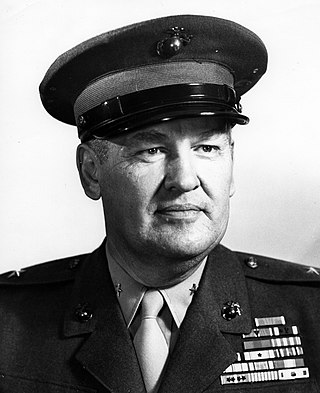
Russell Nelton Jordahl was a decorated officer in the United States Marine Corps with the rank of brigadier general. A Veteran of World War II, Korea and several expeditionary tours, Jordahl completed his career as commanding general, Landing Force Training Unit, Pacific.
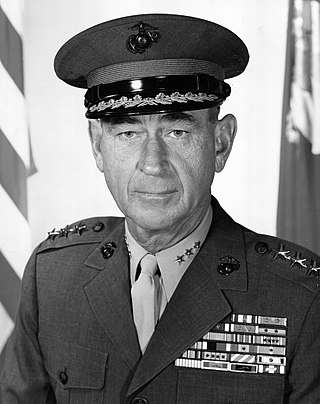
Joseph Charles Fegan Jr. was a highly decorated officer in the United States Marine Corps with the rank of lieutenant general. A son of Major General Joseph C. Fegan, he received several citations for bravery during three wars and completed his career as commanding general, Marine Corps Development and Education Command.

Kenneth Wachter Benner was a decorated officer in the United States Marine Corps with the rank of Brigadier general. A graduate of the United States Naval Academy, he trained as Anti-Aircraft Artillery officer and participated in the Defense of Pearl Harbor, Guadalcanal Campaign and Battle of Okinawa.
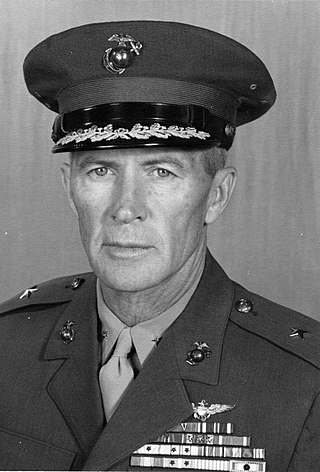
John Paul Coursey was a decorated officer and naval aviator in the United States Marine Corps with the rank of Brigadier General. A survivor of the sinking of battleship Arizona during the Japanese attack on Pearl Harbor, he completed flight training and assumed command of Marine Transport Squadron 152 (VMR-152), operating in the Northern Solomons.
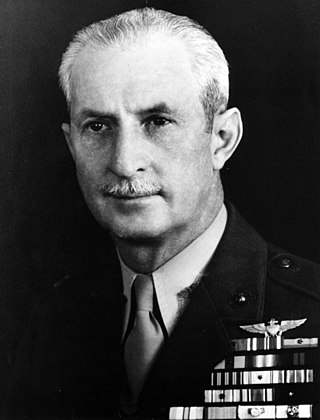
Hayne Davis Boyden was a highly decorated Naval aviator and aviation pioneer in the United States Marine Corps who retired at the rank of Brigadier General. A veteran of several campaigns of the Banana Wars, Boyden became known in the Marine Corps as a pioneer in Aerial photography. He photographed thousands of square miles of Cuba, Haiti, Nicaragua, Panama and the Olympic forestry region of the Pacific northwest. This aerial photography became the basis for mosaic maps of these areas.





















